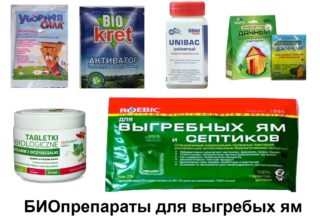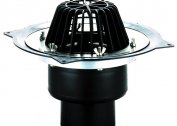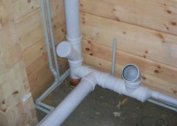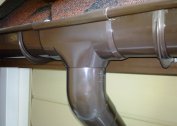Owners of country houses and urban private houses often face the problem of the lack of centralized sewage. Most find a way out in the equipment of isolated systems. The construction of automated wastewater treatment plants is too expensive. If you rely on price opportunities, then in this case, a cesspool will be a suitable stock system. When building it, it is recommended not to seal the walls and the bottom, since the filling speed of the sealed pit is faster.
To ensure its long-term and high-quality functioning, as well as to maintain ecological and aesthetic balance, regular cleaning is necessary. Not all owners of this design have the opportunity to pump out the contents with waste pumping devices and sewage disposal equipment. Such options are expensive when used frequently. In addition, not everyone has access to the sewer pit, and the contaminated liquid simply simply has nowhere to drain.
Consider methods of cleaning a cesspool without pumping with special tools:
- mechanical;
- chemical;
- biological;
- folk.
Mechanical cleaning
 Mechanical cleaning of a cesspool without pumping can be carried out using a rope and a deep container.
Mechanical cleaning of a cesspool without pumping can be carried out using a rope and a deep container.
This option to remove sewage is not expensive, but time consuming. It is necessary to be physically prepared for the fact that you will have to lift more than once a filled container and mentally prepared for inhaling an unpleasant odor. To clean the tank in this way, you will need:
- protective suit;
- deep capacity (preferably weighty);
- rope;
- respirator;
- gloves
- rubber boots (when descending into a cesspool).
The mechanism of work is as follows: the rope is tied to the container, the container is lowered into the pit and scoops up waste, the extracted sewage is transferred to a closed container for removal.
Chemical cleaning
 All chemicals are frost resistant. They are produced in various formats: powder, liquid, in the form of tablets.
All chemicals are frost resistant. They are produced in various formats: powder, liquid, in the form of tablets.
We highlight several chemicals that are effective for cleaning cesspools:
- formaldehyde;
- ammonium compounds;
- nitrogen compounds.
When using the above funds, it is very important to observe safety measures, since chemicals can behave differently when combined with other substances.
Formaldehyde is an effective and not expensive drug. It has a pungent odor. If there is solid waste in the pit, I often use formaldehyde. It destroys the solid structure of waste, turning it into compost. The drug has the ability to corrode metal, therefore, it is recommended to prevent contact of the drug with iron products.
To eliminate the unpleasant odor in the cesspool and the decomposition of solid waste, ammonium is effective. Do not use it if there are household chemicals in the pit (washing powder, dishwashing detergent, etc.), as they reduce the effectiveness of the product.
Nitrogen fertilizers are considered less harmful, but expensive. They cope well with the dissolution of sludge in the sewer. In addition to the decomposition of sewage, they struggle with a fetid odor.
Biological treatment
 The composition of biological preparations includes microorganisms created by artificial means.
The composition of biological preparations includes microorganisms created by artificial means.
The advantages of such tools are that they are completely harmless to human health and the environment, do not affect the materials of construction, they can be used for open and sealed structures.
The disadvantages are the following: the need for frequent updating of the product, instability at low temperatures, intolerance to chemical impurities.
The bacteria of the drug have multifunctionality. They contribute to the elimination of fat deposits on the walls of sewers, the elimination of unpleasant odors, and also dissolve sludge. The drugs come into effect two hours after they are placed in the cesspool.
Biological agents are divided into two groups:
- septic tanks;
- antiseptics.
Biological preparations belonging to the group of septic tanks actively decompose waste. Microorganisms of this type are cultured; it is difficult for them to adapt to the environment where household chemicals are contained.
With frequent use of septic tanks, the need for emptying the cesspool by mechanical means is reduced.
Antiseptic agents are used to disinfect sewer tanks.
The contents of the pits are a suitable environment for the development of bacteria that adversely affect human health. They are also a source of unpleasant odor.
Antiseptics fight these phenomena, and also, I have the property of processing solid waste into liquid mass.
Consider the last weapon against sewage in a cesspool.
Folk remedies
The best known remedies belonging to this group are plants with a pleasant, specific smell and sawdust. In a friendly tandem, plants will dull an unpleasant odor, and sawdust will absorb the contents. An example of effective plants: mint, basil, tomato, nettle. The advantage of this tool is that material for use can be found in any yard. Cons: offensive odors are not destroyed long-term, solid waste is not split. Folk remedies are much inferior to modern ones, but nevertheless they are the most affordable.
Which method of cleaning is the best - this choice is individual.
Many people prefer cleaning the cesspool with special pumps or machines.
And not in vain. This procedure is safer than manual cleaning with a rope and container. Less hassle and waste of time. Biological products and chemicals reduce the filling of the pits, decomposing the contents to a liquid state, but they can not guarantee a complete disposal of fat and silt.
Thinking about choosing a cleaning method is acceptable. It is unacceptable not to use one of them.


